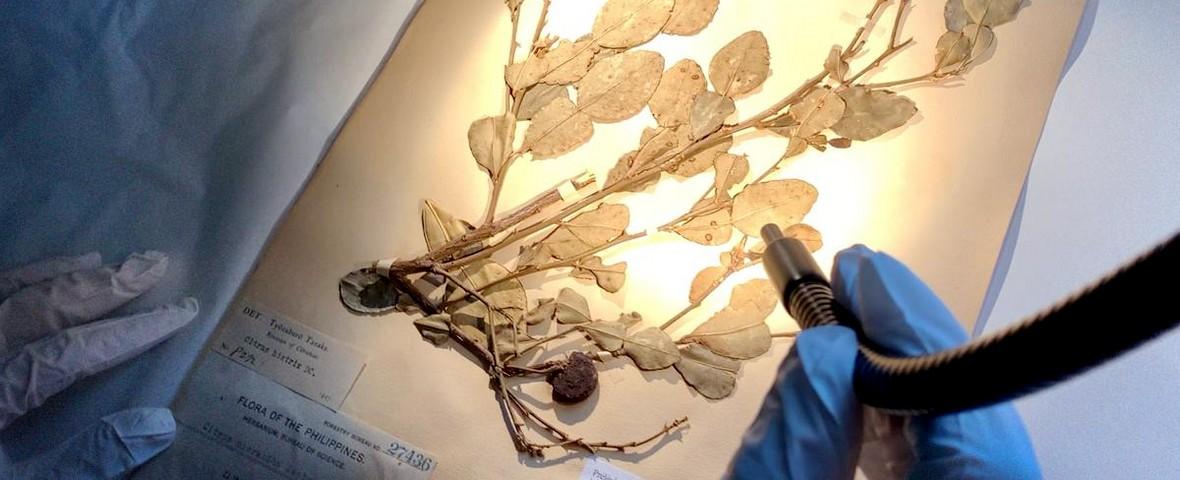Results & impact 2 April 2024
- Home
- Press area
- Press releases
- Evolutionary history of a citrus pathogen
Ancient genomics unveils the evolutionary history of a citrus pathogen

Specimen from the national Herbarium of the Muséum national d'Histoire naturelle: genus Citrus, with some leaves displaying characteristic lesions of citrus canker © L. Gagnevin, CIRAD
Over the last decade, paleogenomics - the study of the genomes of ancient individuals - has led to major and original advances in our knowledge of pathogens, including those affecting crops. Using infected citrus herbarium samples from a dozen botanical collections and natural history museum herbariums, a team of scientists from CIRAD and MNHN has reconstructed 13 historical genomes of a pathogenic bacterium responsible for citrus canker: the bacterium Xanthomonas citri pv. citri, whose oldest genome dates back to 1845.
By comparing these historical genomes with modern ones, the researchers have shown that this bacterium appeared around 11 500 years ago in South Asia and diversified from the early 13th century onwards. This chronology corresponds to the diversification of Citrus and suggests a link between the specialization of the bacterium on citrus fruits and Neolithic climatic changes, as well as the development of agriculture that followed them. The development of citrus cultivation was a major factor in the diversification of the bacterium, facilitated by early East-West trade on the Silk Roads and the globalization of agriculture from the 17th century onwards.
This study marks a milestone in the field of paleogenomics and its application to plant pathogen research. Thousands of herbarium samples, including cultivated plants and preserved worldwide, remain to be explored. This work illustrates the importance of maintaining and enriching such collections, and opens up many new avenues for their development, particularly in terms of understanding the interactions between pathogens, plants and human activities.
Herbarium collections sampled:
- Herbarium of the Royal Botanic Gardens | Kew;
- Mauritius Herbarium;
- Herbier national du Muséum national d'Histoire naturelle;
- United States National Fungus Collections;
- United States National Herbarium.
Reference
P. E. Campos, O. Pruvost, K. Boyer, F. Chiroleu, T. Trang Cao, M. Gaudeul, C. Baider, T. M. A. Utteridge, N. Becker, A. Rieux, L. Gagnevin. Herbarium specimen sequencing allows precise dating of Xanthomonas citri pv. citri diversification history. Nature communications. https://doi.org/10.1038/s41467-023-39950-z


























